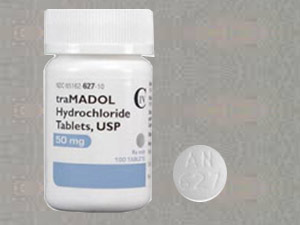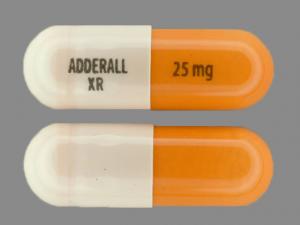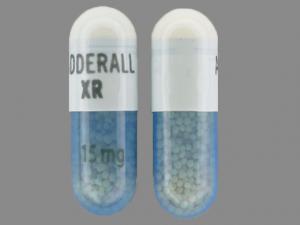Description
Tramadol for Dogs: A Safe and Effective Pain Relief:
Tramadol for dogs helps pet owners manage moderate to severe pain in their furry friends.
Veterinarians often prescribe tramadol to relieve chronic pain caused by arthritis, post-surgery recovery, or injuries.
This opioid medication works by altering the dog’s perception of pain, providing much-needed relief.
Owners use tramadol under professional supervision, as the dosage depends on weight, age, and health.

Administering the correct dosage ensures your dog receives effective pain relief without serious side effects.
Some dogs experience mild symptoms such as sedation, nausea, or loss of appetite, which are usually temporary.
However, closely monitoring your dog can prevent more serious reactions.
Caution should be exercised when combining tramadol with other medications, including antidepressants or sedatives.
Never administer tramadol without veterinary approval. Tramadol for dogs
Tramadol does not cure pain, but it does provide valuable pain relief to improve your dog’s comfort and quality of life.
Always follow your veterinarian’s instructions when using tramadol in dogs.
What is tramadol, and why do veterinarians prescribe it?
Tramadol is a synthetic opioid commonly prescribed to dogs to treat a variety of painful conditions, from acute injuries to chronic conditions such as arthritis.
Specifically, it works by altering how the dog’s brain perceives pain signals, resulting in a significant reduction in discomfort.
Veterinarians value tramadol for its dual mechanism of action, as it not only binds to opioid receptors but also inhibits the reuptake of norepinephrine and serotonin, enhancing its analgesic effects.
These properties have made tramadol the preferred choice in veterinary medicine for managing moderate pain without the increased risks associated with stronger opioids.
Common Conditions Treated with Tramadol in Dogs(Tramadol for dogs USA):
Pain caused by surgery, trauma, or chronic illness is frequently treated with tramadol by veterinarians in canine patients.
Dogs recovering from procedures such as orthopedic surgery or dental extractions continually benefit from the analgesic effects of tramadol.
Additionally, dogs suffering from degenerative joint disease, spinal disc disease.
Or cancer-related pain patients are often given tramadol as part of their ongoing treatment plan to maintain their well-being and improve their quality of life.
It’s important to note that tramadol is typically used as part of a multimodal approach to pain management, combined with other medications.
How is tramadol administered to dogs? (Tramadol for dogs UK).
When a veterinarian prescribes tramadol, they always calculate the correct dosage based on the dog’s weight, medical condition, and overall health.
Tramadol is typically administered orally in tablet or capsule form, allowing for easy and convenient dosing at home.
Furthermore, it is essential to follow your veterinarian’s instructions carefully. Tramadol for dogs
And avoid making adjustments without consulting them first, as an incorrect dosage could result in inadequate pain control or adverse effects.
Furthermore, tramadol is usually administered with food to minimize the gastrointestinal discomfort that can sometimes occur during treatment.
Likewise, a consistent dosing schedule is essential to maintain stable blood levels of the medication and ensure continued pain relief.
Recommended Dosage of Tramadol in Dogs (Tramadol for dogs Australia):
Veterinarians generally recommend tramadol doses of 1 to 5 milligrams per kilogram of the dog’s body weight every 8 to 12 hours, depending on the severity of the pain and the individual’s response to the medication.
It is important to understand that the dose can be adjusted gradually over time to optimize pain control and minimize side effects.
Some dogs may require lower doses if they have underlying liver or kidney problems that affect the metabolism and elimination of the drug.
Regular follow-up appointments and ongoing monitoring are recommended to assess the dog’s response and make any necessary dosage adjustments.
Because tramadol can accumulate in the body, especially in cases of metabolic disorders, veterinarians are always cautious when prescribing it for long-term use.
Possible Side Effects Owners Should Be Aware of:
Although tramadol is generally considered safe for canine use, dogs occasionally experience side effects that owners should monitor closely.
Common side effects include gastrointestinal symptoms such as vomiting, diarrhea, and decreased appetite, which are usually mild and transient but may require veterinary attention if they persist.
Additionally, tramadol can cause sedation or lethargy in some dogs, particularly during the first few days of treatment while their bodies adjust to the medication.
However, in rare cases, dogs may develop behavioral changes such as restlessness, anxiety, or increased excitability, which should be reported to their veterinarian immediately.
Seizures are a very rare but serious side effect, especially in dogs with a history of epilepsy or receiving other medications that lower the seizure threshold.
Therefore, it is essential to contact your veterinarian immediately if you notice any unusual or severe symptoms. Tramadol for dogs
Important Precautions and Contraindications for the Use of Tramadol in Dogs:
Before initiating tramadol treatment, veterinarians carefully evaluate the dog’s complete medical history to rule out any conditions that may increase the risk of adverse effects.
Dogs with pre-existing liver or kidney disease are closely monitored, as these organs are responsible for processing and eliminating medications from the body.
Tramadol should be used with caution or avoided in dogs concurrently taking monoamine oxidase inhibitors (MAOIs) .
Or selective serotonin reuptake inhibitors (SSRIs) due to the risk of serotonin syndrome, a potentially fatal condition caused by excessive serotonin levels.
Tramadol is generally not prescribed to pregnant or nursing dogs, as its effects on the developing fetus and nursing puppies are not fully understood.
Additionally, veterinarians recommend that owners avoid combining tramadol with other central nervous system depressants, including certain sedatives and anesthetics, to avoid dangerous interactions.
How do veterinarians monitor dogs receiving tramadol?
Once tramadol treatment begins, veterinarians continually assess the dog’s pain level and overall well-being through regular physical examinations and owner feedback.
Pain assessment systems and behavioral observations are frequently used to evaluate medication effectiveness and guide necessary adjustments.
Laboratory tests, such as blood work and liver function tests, may be performed periodically to detect early signs of toxicity or organ dysfunction.
Veterinarians also recommend that owners keep detailed records of their dog’s behavior, appetite, and side effects to facilitate ongoing monitoring.
Additionally, smooth communication between owners and veterinarians is essential to safely administer tramadol treatment and ensure the dog’s comfort and safety throughout treatment.
Can dogs develop dependence or tolerance to tramadol?
As with humans, dogs can develop tolerance to tramadol over time, meaning the drug may lose its effectiveness at the same dose.
Veterinarians recognize this possibility and adjust doses or consider other pain management options as needed.
Physical dependence and withdrawal symptoms are considered rare in dogs but can occur with prolonged use.
Therefore, tramadol should never be stopped abruptly without veterinary supervision. Tramadol for dogs
Instead, veterinarians often recommend a gradual dose reduction to prevent withdrawal effects and maintain patient comfort.
These considerations underscore the importance of veterinary supervision and careful management throughout tramadol treatment.
Interactions between tramadol and other medications in dogs:
Because tramadol affects neurotransmitter levels and opioid receptors, it continually interacts with other medications the dog may be taking.
Concomitant use of other opioids, sedatives, or anticonvulsants can intensify the sedative effects and respiratory depression.
Veterinarians, therefore, carefully evaluate a dog’s entire medication regimen before prescribing tramadol.
Medications that affect liver enzymes, such as certain antibiotics or antifungals, can alter tramadol’s metabolism, causing levels to increase or decrease.
Furthermore, combining tramadol with serotonergic medications, such as SSRIs or tricyclic antidepressants, increases the risk of serotonin syndrome, which requires immediate veterinary attention.
For these reasons, it is strongly recommended that pet owners disclose all medications and supplements their dog is taking to avoid harmful complications.
Alternatives to Tramadol for Pain Management in Dogs:
While tramadol is generally effective, veterinarians sometimes explore alternative or complementary options for pain relief based on the dog’s specific condition and response.
Nonsteroidal anti-inflammatory drugs (NSAIDs), such as carprofen or meloxicam, are often preferred for inflammatory pain .
But it may not be appropriate for all dogs due to potential gastrointestinal or renal side effects.
Gabapentin is another commonly prescribed medication for neuropathic pain or in combination with tramadol to improve pain control.
Physical therapy, acupuncture, and laser therapy are becoming increasingly popular adjuncts to drug therapy, offering additional benefits with minimal risk.
Ultimately, veterinarians always individualize pain management plans to ensure the best quality of life for dogs suffering from painful conditions.
Final Thoughts on the Use of Tramadol in Dogs:
In summary, tramadol continues to play a crucial role in veterinary pain management, providing a safe and effective option for dogs suffering from moderate to severe pain.
Responsible use, including proper dosing, monitoring for side effects, and awareness of drug interactions, is essential to maximize benefits and minimize risks.
Pet owners are encouraged to maintain open communication with their veterinarian throughout treatment and to report any concerns immediately.
By understanding the intricacies of tramadol treatment and strictly following professional recommendations, dogs can live more comfortable and pain-free lives. Tramadol for dogs
Frequently Asked Questions About Tramadol for Dogs:
1. How long is tramadol typically prescribed for dogs?
Veterinarians typically prescribe tramadol for short- to medium-term use.
Typically lasting a few days to a few weeks, depending on the underlying condition and response to treatment.
2. Can I give tramadol to my dog without a prescription?
It is strongly recommended not to administer tramadol to dogs without veterinary supervision, as improper dosage or use can cause serious side effects or be ineffective.
3. What should I do if my dog misses a dose of tramadol?
If a dog misses a scheduled dose, owners are generally advised to administer the medication as soon as they remember, unless it is almost time for the next dose.
4. Are there natural alternatives to tramadol for pain relief in dogs?
In addition to medications, veterinarians are increasingly recommending complementary therapies such as physiotherapy, acupuncture, hydrotherapy, and nutritional supplements like omega-3 fatty acids or glucosamine.
5. How is tramadol different from NSAIDs used in dogs?
Tramadol works primarily by altering the brain’s perception of pain by activating opioid receptors and modulating neurotransmitters.
6. Can tramadol cause dependence or addiction in dogs?
Although tramadol can cause tolerance and dependence, these problems are relatively rare in dogs when used appropriately under veterinary supervision.
7. What are the signs of a tramadol overdose in dogs?
Signs of a tramadol overdose in dogs may include excessive sedation, vomiting, difficulty breathing, seizures, and loss of coordination.
8. Can puppies or older dogs safely take tramadol?
Veterinarians generally prescribe tramadol with particular caution in puppies and older dogs due to their different metabolic rates and the potential for greater sensitivity to side effects.





Elijah Aureline –
The best product in this category.